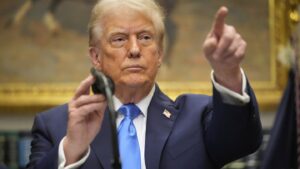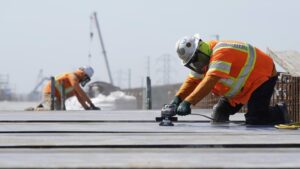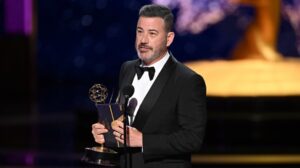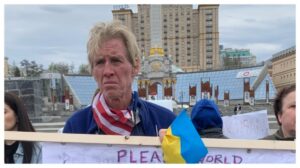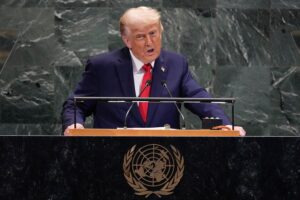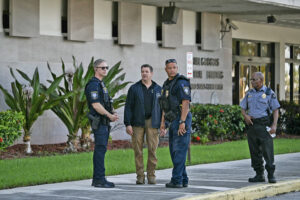The Dictatorship
A deeper look at the talks between US and Russian officials as Trump suggests Ukraine is to blame
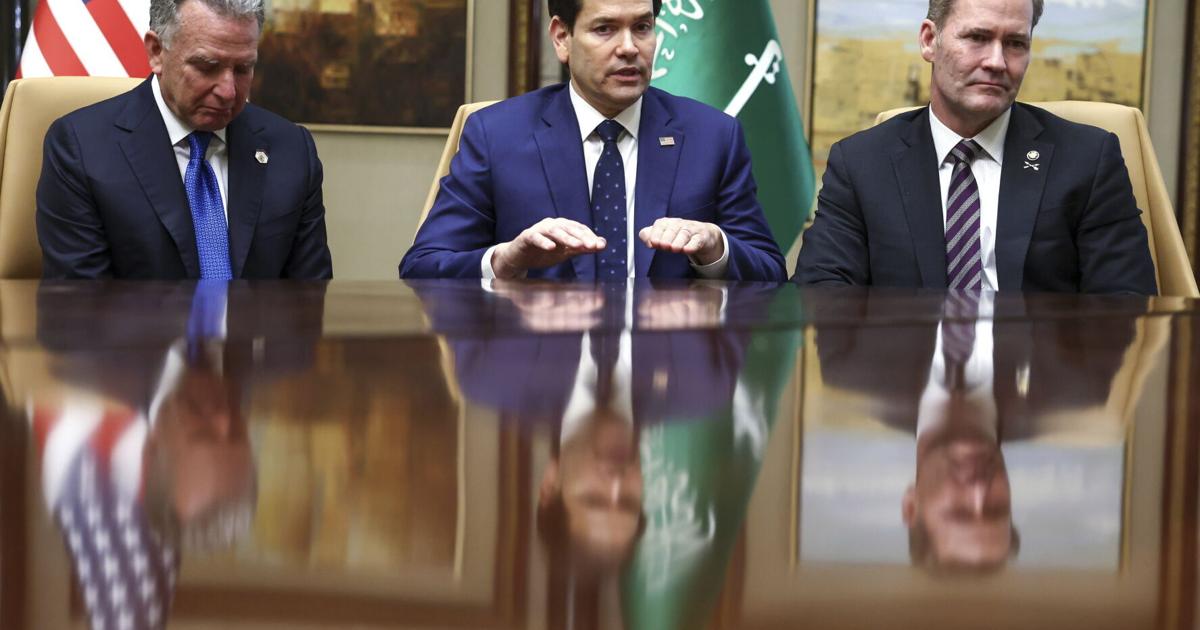
RIYADH, Saudi Arabia (AP) — Top U.S. and Russian officials had their most extensive high-level engagement since Moscow sent troops into Ukraine almost three years ago, meeting for four hours Tuesday before President Donald Trump suggested that Kyiv was to blame for the conflict.
Trump showed little patience for Ukraine’s objections to being excluded from the talks in Saudi Arabia. He said repeatedly that Ukraine’s leaders never should have allowed the conflict to begin, indicating Kyiv should have been willing to make concessions to Russia before it sent troops into Ukraine in 2022.
“Today I heard, ‘Oh, well, we weren’t invited.’ Well, you been there for three years. You should have ended it three years” ago, Trump told reporters at his Florida residence. “You should have never started it. You could have made a deal.”
Such comments and Trump’s goal of mending ties with Moscow may come at a cost to the transatlantic alliance of the U.S. and Europe and significantly damage Washington’s standing with Ukraine as well as with other nations counting on U.S. leadership in NATO and elsewhere for their security and protection.
During former President Joe Biden’s administration, the U.S. and Europe focused on isolating Russia and defending the post-World War II international order.
In Riyadh, the delegations led by U.S. Secretary of State Marco Rubio and Russian Foreign Minister Sergey Lavrov agreed to set up teams to look into restoring staffing at the U.S. and Russian embassies in Moscow and Washington that have been decimated by a series of tit-for-tat diplomatic expulsions.
The effort is aimed at using those channels to support Ukraine peace negotiations and to explore ways to restart economic and global cooperation. A Russian official pointed to possible joint energy ventures.
Here’s a look at the meeting and what comes next:
Reestablishing tattered diplomatic relations
First on both countries’ list of accomplishments was an agreement to end what has been years of dwindling diplomatic relations that hit a post-Cold War low point after Russian President Vladimir Putin sent troops into Ukraine in February 2022.
The meeting, which came just a week after Trump spoke to Putin by phone, was the first substantive face-to-face discussion between the nations’ top diplomats since former Secretary of State Antony Blinken met Lavrov in Geneva in January 2022 in an unsuccessful bid to prevent the Ukraine conflict.
Lavrov said after Tuesday’s talks that the sides agreed to fast-track the appointment of new ambassadors, adding that senior diplomats from the two countries will meet shortly to discuss specifics related to “lifting artificial barriers to the work of the U.S. and Russian embassies and other missions.”
In reality, the decimation of the U.S. and Russian embassies’ personnel began well before Russian troops rolled into Ukraine in 2022, starting after 2014 Russia’s annexation of Crimea. That was seen as illegal by most of the world during the Obama administration, which ordered several Russian offices in the U.S. to close.
It picked up steam after the 2018 poisoning in Britain of an exiled Russian spy and his daughter, which British authorities blamed on Russia, and which resulted in mass expulsions of diplomats and the closure of numerous consulates in both countries and Europe.
Asked by The Associated Press if the U.S. now considered those cases closed, Rubio declined to say but said it would be impossible to get a Ukraine peace agreement without diplomatic engagement.
“I’m not going to negotiate or talk through every element of the disruptions that exist or have existed in our diplomatic relations, on the mechanics of it,” he said. Bringing an end to the conflict cannot happen “unless we have at least some normalcy in the way our diplomatic missions operate in Moscow and in Washington, D.C.”
Negotiating an end to the conflict in Ukraine
The two sides agreed to set up high-level working groups to begin exploring a negotiated end to the conflict. It was not immediately clear when these teams would first meet, but both said it would be soon.
As to concessions that may need to be made by all sides, Trump’s national security adviser, Mike Waltz, who participated in the talks Tuesday, said the issue of territory and security guarantees would be among the subjects discussed.
Rubio said a high-level team, including experts who know technical details, will begin to engage with the Russian side on “parameters of what an end to this conflict would look like.”
On the key issue of a prospective peacekeeping mission to monitor a potential ceasefire in Ukraine, the top Russian diplomat said Moscow would not accept any troops from NATO members, repeating its assertion that Ukraine’s bid to join the Western military alliance poses a major security issue.
“We explained that the deployment of troops from the countries that are NATO members, even if they are deployed under the EU or national flags, will not change anything and will certainly be unacceptable for us,” Lavrov said.
Exclusion of Ukraine and Europe from the talks
Neither Ukraine nor European nations were invited to Tuesday’s talks in Riyadh, but U.S. officials said there is no intention to exclude them from peace negotiations should they begin in earnest.
“No one is being sidelined here,” Rubio said. “Obviously, there’s going to be engagement and consultation with Ukraine, with our partners in Europe and others. But ultimately, the Russian side will be indispensable to this effort.”
Waltz agreed: “If you’re going to bring both sides together, you have to talk to both sides. … We are absolutely talking to both sides.”
He noted that Trump spoke with Ukrainian President Volodymyr Zelenskyy immediately after speaking with Putin last week and that U.S. Vice President JD Vance and Rubio met Friday with Zelenskyy in Germany.
Still, Zelenskyy was clearly peeved at being omitted from the meeting, postponing plans to visit Saudi Arabia on Wednesday to avoid any linkage of his trip with Tuesday’s U.S.-Russia talks.
And that was before Trump’s comments suggesting Kyiv was at fault in starting the fighting.
“This whole negotiation from the start seems very tilted in Russia’s favor. And it’s even a question whether it should be termed a negotiation or in some sense, a series of American capitulations,” said Nigel Gould-Davies, senior fellow for Eurasia and Russia at the International Institute for Strategic Studies in London and a former British ambassador to Belarus.
Possible lifting of US sanctions against Russia
Asked whether the U.S. could lift sanctions against Moscow imposed during the Biden presidency, Rubio noted that “to bring an end to any conflict, there has to be concessions made by all sides” and “we’re not going to predetermine what those are.”
Asked if the U.S. could officially remove Lavrov from its sanctions list, Rubio said that “we’re just not at that level of conversation yet.”
Potential US-Russian cooperation
Kirill Dmitriev, head of the Russian Direct Investment Fund who joined the Russian delegation in Riyadh, told reporters that Russia and the U.S. should develop joint energy ventures.
“We need joint projects, including in the Arctic and other regions,” he said.
Should the parties succeed in negotiating an end to the Ukraine conflict, Rubio said, it could open “incredible opportunities” to partner with the Russians “on issues that hopefully will be good for the world and also improve our relations in the long term.”
He did not say what those would entail.
___
Isachenkov reported from Moscow. Associated Press Writer Emma Burrows in London and Jonathan J. Cooper in Phoenix contributed to this report.
The Dictatorship
Dr. Trump? The president reprises his COVID era
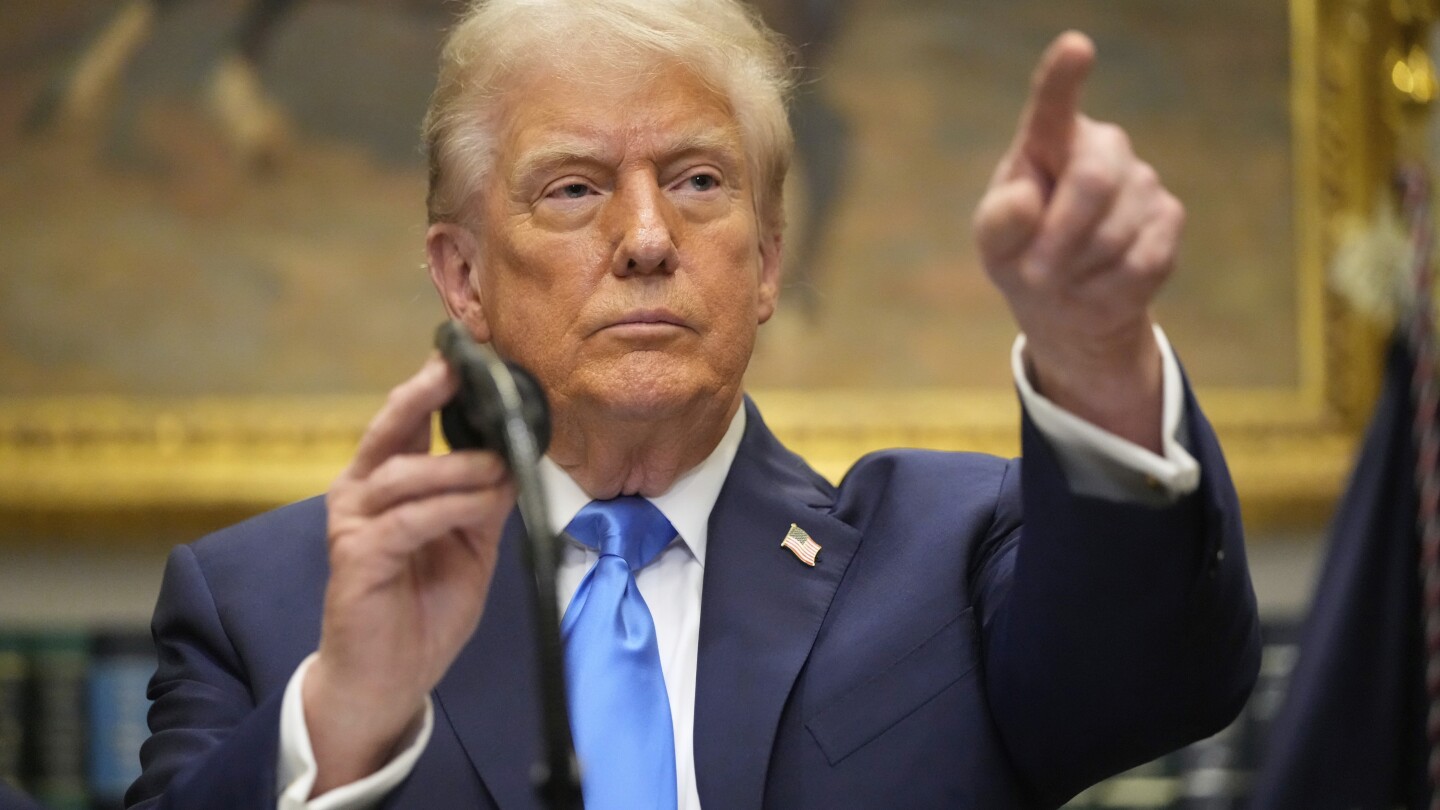
WASHINGTON (AP) — President Donald Trump isn’t a doctor. But he played one on TV Monday, offering copious amounts of unproven medical advice that he suggested — often without providing evidence — might help reduce autism rates.
Trump repeatedly implored pregnant women to avoid taking the painkiller Tylenol, the bestselling form of acetaminophen. That’s despite the American College of Obstetricians and Gynecologists long recommending acetaminophen as a safe option during pregnancy. He even weighed in on when children should be given painkillers.
Speaking alongside Health and Human Services Secretary Robert F. Kennedy Jr., himself a vaccine skepticTrump stopped short of opposing all vaccines. But he said key immunizations should be delayed, or combination shots should be given separately — even though it has been proven that vaccines have no link to autism.
“Don’t let them pump your baby up with the largest pile of stuff you’ve ever seen in your life,” he said.
Trump also wildly overstated how such shots — some of which protect against four diseases — are given.
“I think it’s very bad. They’re pumping, it looks like they’re pumping into a horse,” Trump said. “You have a little child. A little fragile child. And you’ve got a vat of 80 different vaccines, I guess, 80 different blends, and they pump it in.”
Dr. Trump redux
The presentation recalled the early days of the coronavirus pandemic during Trump’s first term, when the president stood for daily White House briefings and tossed out grossly inaccurate claims — including famously suggesting that injecting disinfectants could help people.
“I see the disinfectant that knocks it out in a minute, one minute. And is there a way we can do something like that by injection inside, or almost a cleaning?” Trump asked in April 2020. “As you see, it gets in the lungs, it does a tremendous number on the lungs, so it would be interesting to check that.”
He later claimed he’d been joking, but those briefings soon stopped. His tone stayed serious Monday.
The president suggested unspecified problems with the the safe and effective MMR — measles, mumps and rubella — vaccine and advised parents to wait years later than now, until age 12, for hepatitis B vaccines to be given to children.
The theme he hit harder than any other, though, was declaring a supposed link between autism and acetaminophen, which is known in most countries outside the U.S. as paracetamol. Trump repeated, “Don’t take Tylenol,” with increasing urgency and eventually shouted it.
Tylenol maker Kenvue disputed any link between the drug and autism and said in a statement that if pregnant mothers don’t use Tylenol when in need, they could face a choice between suffering potentially dangerous fevers or using riskier painkiller alternatives.
Trump, Kennedy and many of the administration’s top health officials all spoke, but largely repeated known statistics rather than new research findings. Trump appeared to acknowledge that science might not be on his side, saying at one point, “I’m just making these statements from me.”
“I’m not making them from these doctors,” the president conceded. “Cause when they, uh, talk about, you know, different results, different studies, I talk about a lot of common sense. And they have that, too. They have that too, a lot.”
But then he later insisted he’d “spoken to many doctors about everything we’re talking about.”
Many scientists were appalled
“The announcement on autism was the saddest display of a lack of evidence, rumors, recycling old myths, lousy advice, outright lies, and dangerous advice I have ever witnessed by anyone in authority in the world claiming to know anything about science,” Arthur Caplan, of the New York University School of Medicine’s Division of Medical Ethics, said in a statement. “What was said was not only unsupported and wrong but flat out malpractice in managing pregnancy and protecting fetal life.”
Ahead of the autism event, Trump had suggested that his administration had discovered new medical links that would dramatically explain why its rates have risen. But his preparation didn’t include learning how to pronounce acetaminophen, which tripped him up.
“Asedo … well, let’s see how we say that. Acid em … menophin,” Trump stammered before continuing, “Acetaminophen? Is that OK?”
Trump also insisted there was “no downside” to Americans heeding his advice “other than a mother will have to, as I say, tough it out a little bit” and avoid Tylenol for pain while pregnant.
“Everything I said, there’s no downside to doing it,” Trump said. “It can only be good.” Still, untreated fevers in pregnancy, particularly the first trimester, increase the risk for miscarriages, preterm birth and other problems, according to the Society for Maternal-Fetal Medicine.
The president tried to head off such criticism by blaming pharmaceutical companies and “maybe doctors” for having suppressed critical medical information previously. He said his statements were based on “the information that we have.”
“I’m making them out front, and I’m making them loud,” Trump said. “And I’m making them strongly.”
The Dictatorship
Federal judge lifts administration halt of offshore wind farm in New England
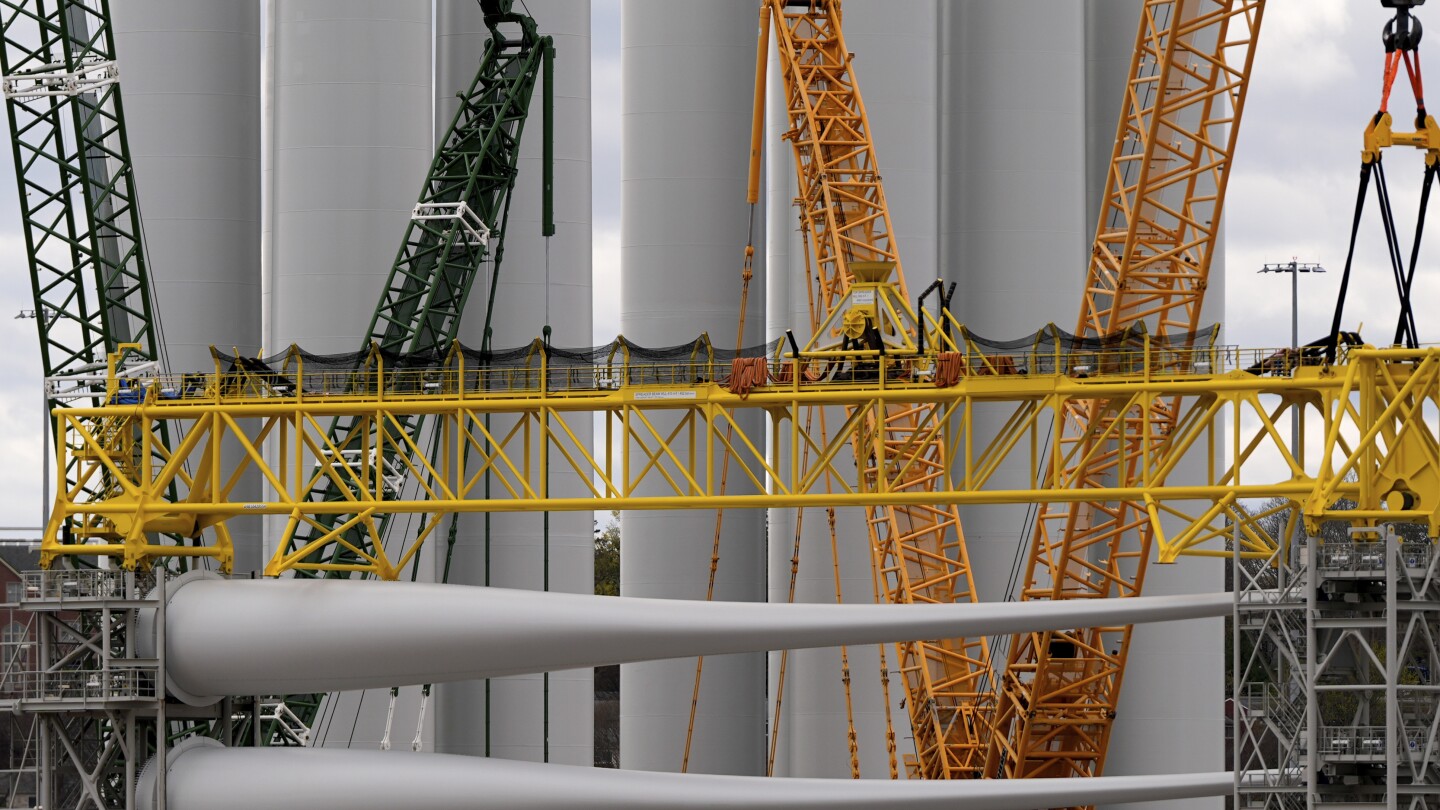
WASHINGTON (AP) — A federal judge ruled Monday that a nearly complete offshore wind project halted by the administration can resume, dealing President Donald Trump a setback in his ongoing effort to restrict the fledgling industry.
Work on the nearly completed Revolution Wind project for Rhode Island and Connecticut has been paused since Aug. 22 when the Bureau of Ocean Energy Management issued a stop-work order for what it said were national security concerns. The Interior Department agency did not specify those concerns at the time. Both the developer and the two states sued in federal courts.
Danish energy company Orsted and its joint venture partner Skyborn Renewables sought a preliminary injunction in U.S. District Court that would allow them to move forward with the project.
At a hearing Monday, Judge Royce Lamberth said he considered how Revolution Wind has relied on its federal approval, the delays are costing $2.3 million a day and if the project can’t meet deadlines, the entire enterprise could collapse. After December, the specialized ship needed to complete the project won’t be available until at least 2028, he said. More than 1,000 people have been working on the wind farm, which is 80% complete.
“There is no question in my mind of irreparable harm to the plaintiffs,” Lamberth said, as he granted the motion for the preliminary injunction. In his written ruling, he said Revolution Wind had “demonstrated likelihood of success on the merits” of its claim, adding that granting the injunction is in the public interest.
Interior Department spokeswoman Elizabeth Peace said the ruling means Revolution Wind “will be able to resume construction” while the Bureau of Ocean Energy Management “continues its investigation into possible impacts by the project to national security and prevention of other uses on the Outer Continental Shelf.”
The administration said in a court filing this month that while BOEM approved the wind farm, it stipulated that the developer continue to work with the Department of Defense to mitigate national security concerns. It said the Interior Department, to date, has not received any information that these concerns have been addressed.
Orsted said Monday that construction will resume as soon as possible, and it will continue to seek to work collaboratively with the administration.
Nancy Pyne of the Sierra Club said the court ruling “reaffirms that Donald Trump and his administration’s attacks on clean energy are not only reckless and harmful to our communities, but they are also illegal.” Trump is trying to “kneecap” renewable energy “in favor of dirty and expensive fossil fuels,” she said.
White House spokeswoman Anna Kelly said Trump was elected with a mandate to “restore our country’s energy dominance — which includes prioritizing the most effective and reliable tools to power our country. This will not be the final say on the matter.”
On the campaign trail, Trump vowed to end the offshore wind industry as soon as he returned to the White House. He wants to boost production of fossil fuels such as oil, natural gas and coal, which emit greenhouse gases that cause climate change, in order for the U.S. to have the lowest-cost energy and electricity of any nation in the world, he says.
His administration has stopped construction on major offshore wind farmsrevoked wind energy permits and paused permittingcanceled plans to use large areas of federal waters for new offshore wind development and stopped $679 million in federal funding for a dozen offshore wind projects.
Last week, the administration moved to block a separate Massachusetts offshore wind farm. That was just days after the Interior Department asked a federal judge in Baltimore to cancel previous approval to build an offshore wind project in Maryland.
Revolution Wind is supposed to be Rhode Island’s and Connecticut’s first large offshore wind farm, capable of supplying power to more than 350,000 homes, about 2.5% of the region’s electricity needs.
Connecticut Attorney General William Tong and Rhode Island Attorney General Peter Neronha, who are both Democrats, called the judge’s ruling a major win for workers and families, who need the project to stay on track so it can start to drive down unaffordable energy bills.
Connecticut Rep. Joe Courtney, a Democrat, said a multibillion-dollar project that is 80% complete and was fully permitted with input by the Pentagon is not a national security problem. The Interior Department “should take the hint and let the thousands of construction workers finish the job,” he said.
Orsted began construction in 2024 about 15 miles (24 kilometers) south of the Rhode Island coast. It says in its complaint that about $5 billion has been spent or committed, and it expects more than $1 billion in costs if the project is canceled. Rhode Island is already home to one offshore wind farm, the five-turbine Block Island Wind Farm.
___
McDermott reported from Providence, Rhode Island. AP Writer Susan Haigh in Hartford, Connecticut, contributed to this report.
___
The Associated Press’ climate and environmental coverage receives financial support from multiple private foundations. AP is solely responsible for all content. Find AP’s standards for working with philanthropies, a list of supporters and funded coverage areas at AP.org.
The Dictatorship
Trump wants to redistribute billions that were taken from California’s high-speed railroad
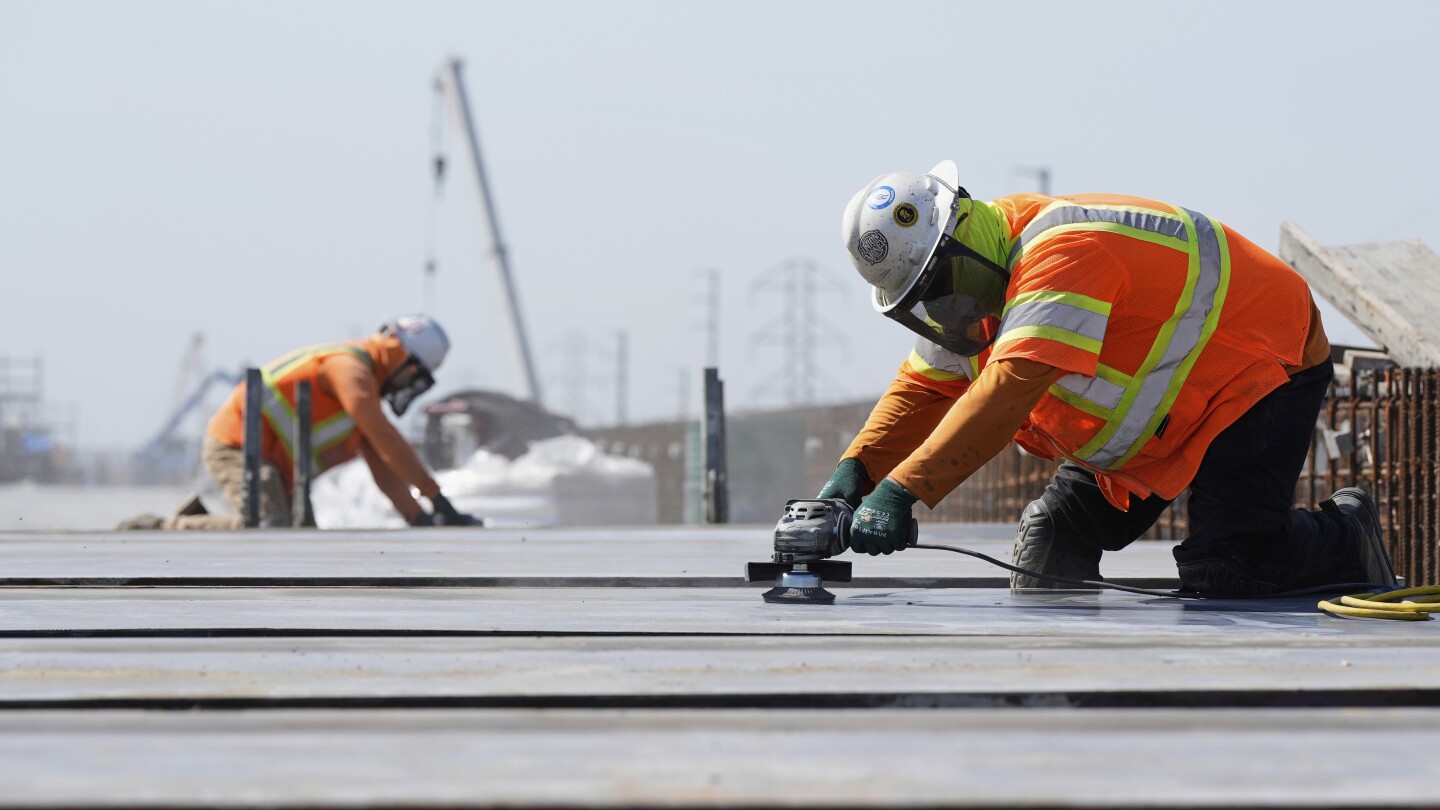
The Trump administration wants to redistribute $2.4 billion it pulled from California’s high-speed rail project as part of a new $5 billion program announced Monday to fund rail projects to boost passenger rail traffic nationwide.
The new program’s rules for states and others wanting to participate remove any mention of diversity or climate change dating to the Biden administration. The new program will also put a priority on projects in areas with higher rates of birth and marriage and projects that improve safety at railroad crossings.
The Trump administration has removed climate change and so-called DEI language from other grant requirements, and Transportation Secretary Sean Duffy took a jab at that Biden-era language and California Gov. Gavin Newsom’s rail project in his announcement.
“Our new National Railroad Partnership Program will emphasize safety – our number one priority – without the radical … DEI and green grant requirements. Instead of wasting dollars on Governor Newsom’s high-speed rail boondoggle, these targeted investments will improve the lives of rail passengers, local drivers, and pedestrians,” Duffy said.
The biggest chunk of this money the Federal Railroad Administration announced comes from the $4 billion that was pulled from the California project. The rest of the money comes from a combination of what was announced last year and what is in this year’s budget.
President Donald Trump and Duffy have both criticized the decades-old California project for its cost overruns and many delays that have kept the train that’s designed to connect San Francisco and Los Angeles from becoming a reality.
California officials said they will fight the effort to redistribute money they believe should be going to their project. They had already filed a lawsuit challenging the Trump administration’s decision to pull federal funding from the rail project.
“The FRA’s decision to terminate federal funding for California high-speed rail was unlawful, unwarranted, and is being challenged in federal court. Now, their attempt to redirect a portion of that funding, currently the subject of litigation, is premature,” said Micah Flores, a spokesman for the California High-Speed Rail Authority. “The Authority has been prepared for this possibility and will take imminent legal action to block this misguided effort by the FRA.”
The focus on areas with higher birth and marriage rates reflects Trump’s executive orders that make spending that benefits American families a priority in his administration, according to an FRA spokesman.
The Federal Railroad Administration said railroad crossings are important to address because more than 200 people a year are killed when trains collide with vehicles or pedestrians at crossings. That has long been something the government and railroads have worked to address, but it is costly to build bridges or underpasses that allow cars to safely bypass the tracks.
Even though the money is targeted toward improving passenger rail, some of it will almost certainly go to improvements on the nation’s major freight railroads because Amtrak uses their tracks for most of its long-distance routes across the country.
The administration also said it would give priority to projects that improve the traveling experience for families by adding amenities like nursing mothers’ rooms, expanded waiting areas and children’s play areas in train stations.
Applications for this money are due by Jan. 7.
___
Associated Press writer Sophie Austin contributed to this report from Sacramento, California.
-
Uncategorized11 months ago
Bob Good to step down as Freedom Caucus chair this week
-
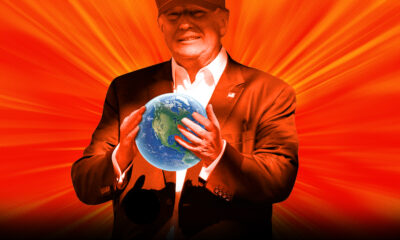
 The Josh Fourrier Show11 months ago
The Josh Fourrier Show11 months agoDOOMSDAY: Trump won, now what?
-
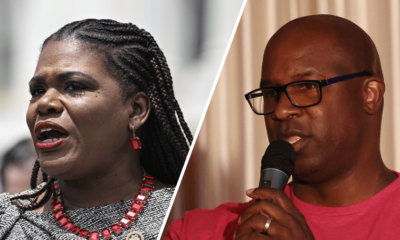
 Politics7 months ago
Politics7 months agoFormer ‘Squad’ members launching ‘Bowman and Bush’ YouTube show
-
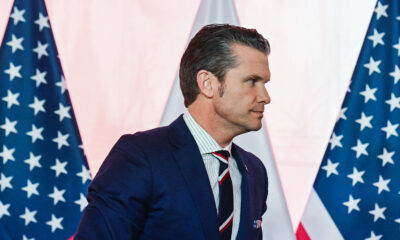
 The Dictatorship7 months ago
The Dictatorship7 months agoPete Hegseth’s tenure at the Pentagon goes from bad to worse
-
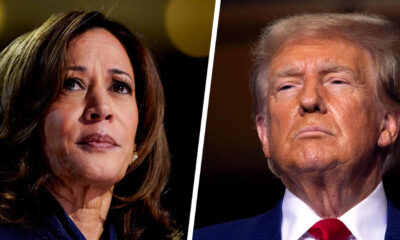
 Politics11 months ago
Politics11 months agoWhat 7 political experts will be watching at Tuesday’s debate
-

 The Dictatorship7 months ago
The Dictatorship7 months agoLuigi Mangione acknowledges public support in first official statement since arrest
-
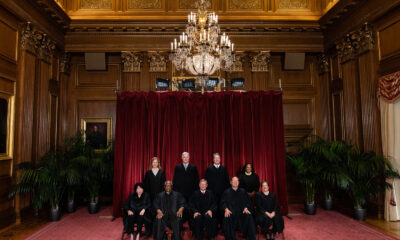
 Politics11 months ago
Politics11 months agoHow Republicans could foil Harris’ Supreme Court plans if she’s elected
-
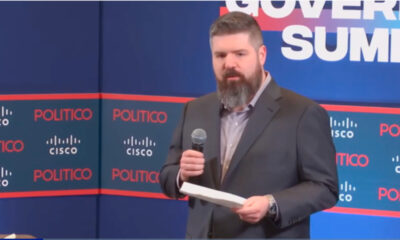
 Politics7 months ago
Politics7 months agoBlue Light News’s Editorial Director Ryan Hutchins speaks at Blue Light News’s 2025 Governors Summit



